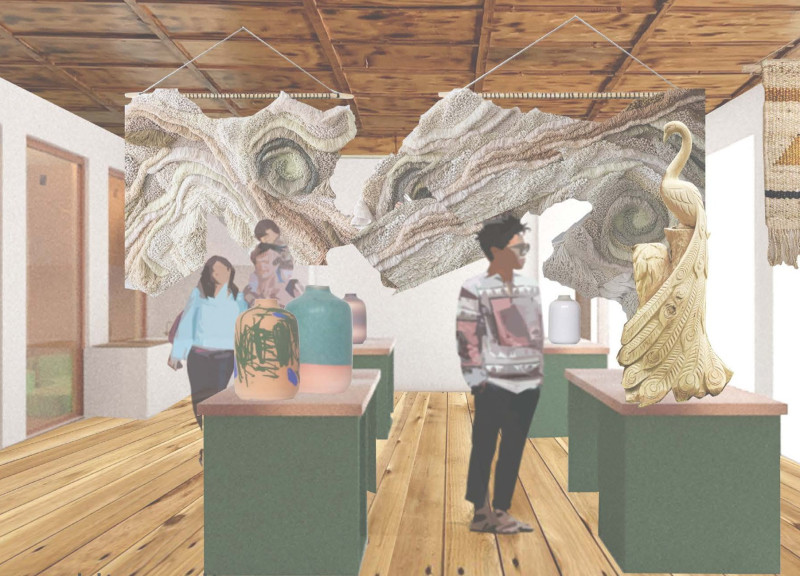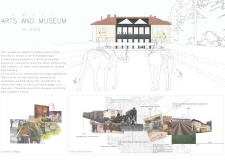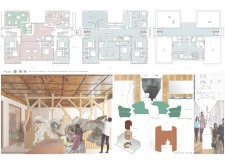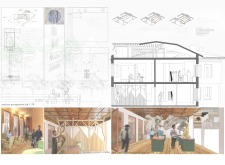5 key facts about this project
The Omuli Arts and Museum of Horse is located in the charming region of Omuli. It focuses on equestrian culture and aims to engage the local community along with visitors. The design connects historical aspects of horse culture with modern needs. This balance creates a lively space for learning, artistic expression, and community interaction.
Spatial Organization
The building layout is designed for various uses, incorporating areas such as museum exhibits, artist studios, and communal living spaces. This thoughtful organization encourages connections among users, allowing for cultural sharing. Guest accommodations are placed close to artist residences and dining areas, promoting collaboration and social gatherings. The arrangement enhances the experience and encourages active participation from everyone involved.
Educational Components
Education is a central theme within the design. Specific areas are dedicated to workshops and programs aimed at exploring the rich history of equestrian traditions. By combining educational facilities with creative spaces, the design encourages a deeper understanding of local heritage. This integration helps users engage with cultural practices, creating opportunities for both learning and interaction within the community.
Materiality
The choice of materials plays a significant role in the overall design. A pine frame provides structural support while also maintaining a natural aesthetic. The exterior features charred larch cladding. This material choice aligns with traditional practices while also appealing to contemporary design sensibilities. The durability of these materials ensures that the building will last, while their visual qualities create a pleasing environment that relates to the local context.
Design Details
The project includes design elements that invite people in and reflect the local culture. A reception area overlooks artist studios, highlighting the heart of the creative community. An added feature is a sauna, which offers a space for relaxation and enjoyment, enriching the experience for visitors and residents alike. These thoughtful design choices reinforce a focus on artistic activities and the historical importance of horses, creating a well-rounded environment for everyone to appreciate.






















































